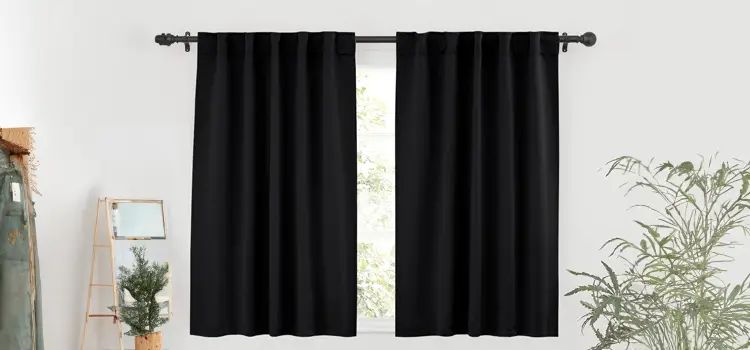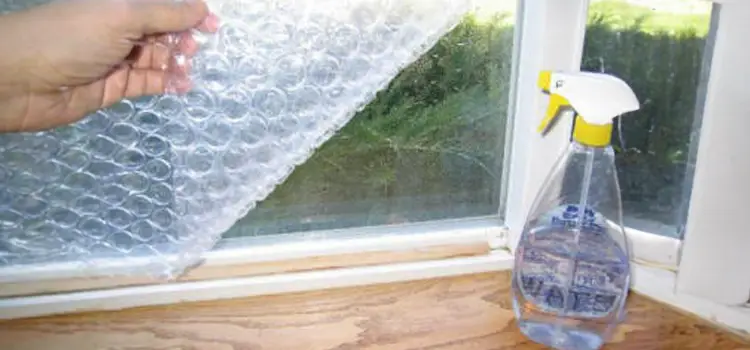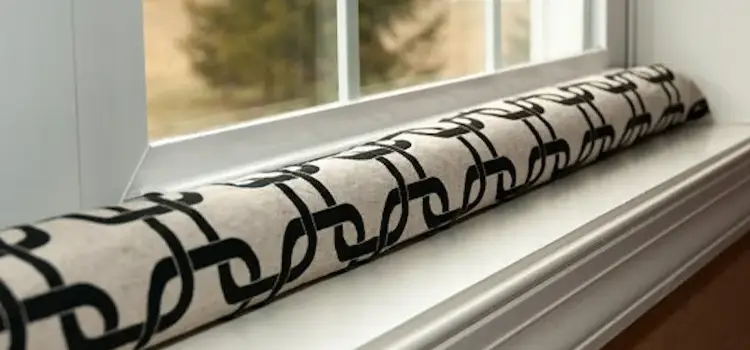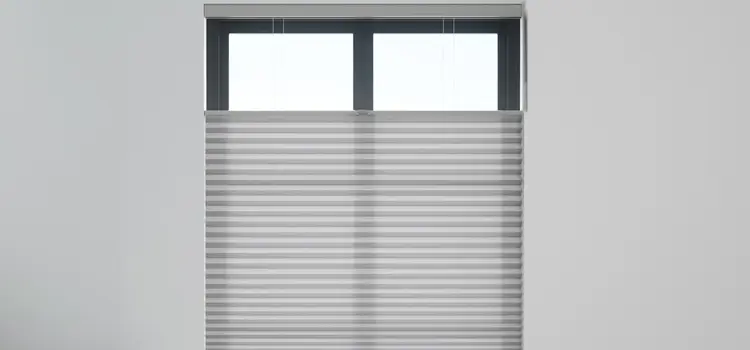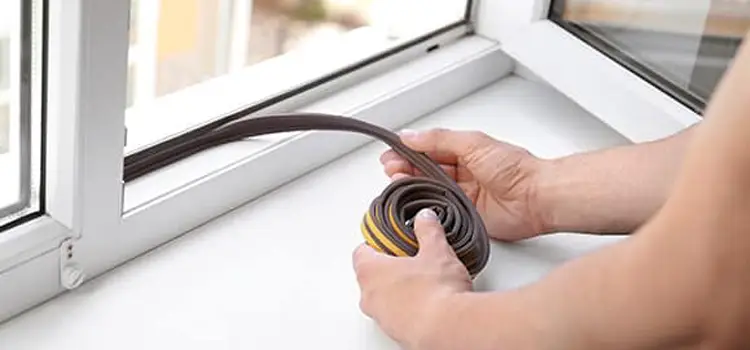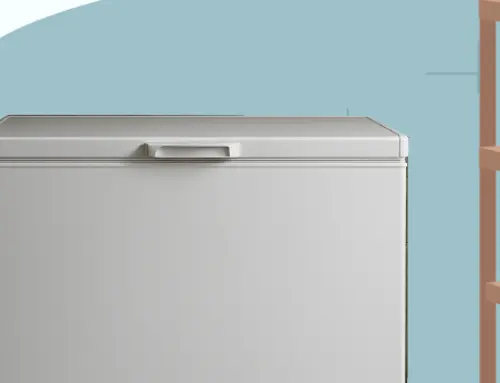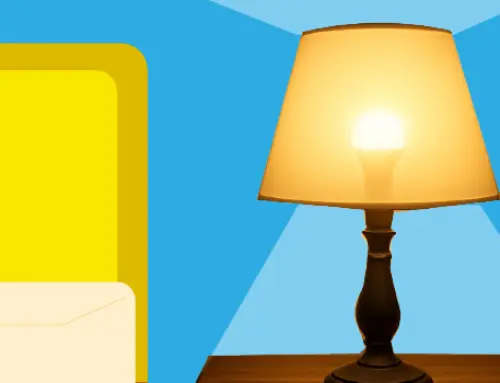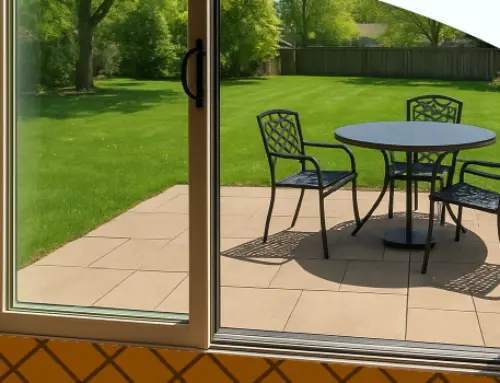How to Insulate Your Windows for Summer
by Tyler Castle
13.5 min read
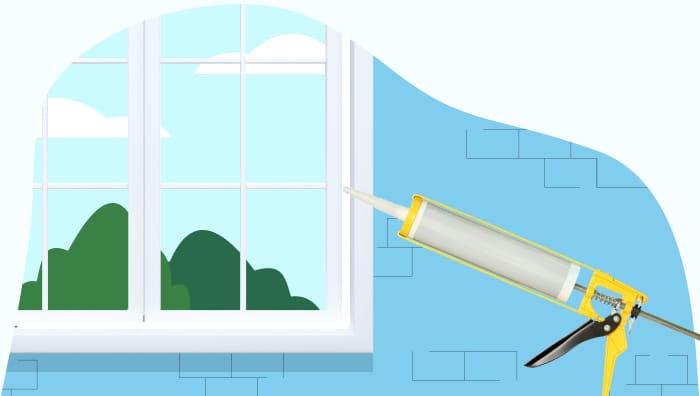
One of the best ways to keep your house comfortable year-round is with proper insulation. The more air that leaks through walls, doors, and windows the harder your heating and cooling systems will need to work to keep you warm in winter and cool in summer.
Proper insulation is especially valuable during the summer. According to the Energy Information Administration (EIA), electricity costs spike in the months of June, July, and August due to the high use of air conditioners and central air. The EIA estimates that about 9% of a typical household’s energy use is just for cooling — which is a recipe for record electricity bills as the U.S. continues to experience historic heat levels in the summer.
Windows can be responsible for up to 25% of all heating or cooling costs due to heat transference. Taking steps to properly insulate your windows will not only help keep the summer heat out, but it keeps cool, air-conditioned air inside. Here are some tips and suggestions on how to insulate your windows for the summer.
How does proper window insulation benefit your home in summer months?
Your windows are great for letting in light, but they also allow in heat and harmful ultraviolet rays. Drafty windows that aren’t properly sealed, and older windows made of thinner glass without any kind of protective treatment will let in more summer heat and a higher amount of UV rays.
While most windows are effective in blocking out the sunburn-causing UVB rays, they still let in UVA rays which can damage your skin’s collagen and increase signs of aging, wrinkling, and risk of skin cancer. UVB rays will also fade and damage your furniture over time. If you live in the city or near a busy stretch of road, uninsulated windows are also more likely to let in traffic noise.
Proper insulation that blocks sunlight heat, such as thermal window coverings, are more likely to keep out uncomfortable elements such as excess heat, UVA rays, and noise pollution.
Does insulating your windows help save money on electricity bills?
The more heat you let into your home, the harder your air conditioner needs to work to cool your rooms down. It follows that the longer and harder your AC unit needs to run, the more electricity you use. So, the more hot air you can keep out with window insulation, the less electricity you’ll need to use to stay cool, which means a lower electricity bill — it’s a win-win!
Also remember that, during hot summer days, chances are that everyone else in your area is also running their AC units, which greatly increases energy demand and can cause energy rates to spike. If you have a variable rate plan for your electricity, you could be spending a lot more to cool your home in summer than you would at other times of the year. If you want to save money, keep the heat out of your home to help your air conditioning units run more efficiently.
How can I insulate my windows for the summer heat?
There are several ways to better insulate your windows against the summer heat, from quick and simple do-it-yourself fixes to more long-term investments.
Quick and simple approaches
These are relatively simple solutions that offer small ways to beat the heat. They may not be the most effective, but they’re the most inexpensive.
Draw your curtains during the day
The easiest way to insulate your windows during hot summer days is to close the curtains or draperies on windows receiving direct sunlight. It’s simple, but effective, proven in studies that demonstrate the right draperies can reduce heat gains by as much as 33%.
Curtains are sized to the window, while drapes will reach all the way to the floor. Both should be hung as close to windows as possible and fall directly onto a window sill or floor to better keep out the heat.
For the most impact, you’ll want to cover your south-facing windows with light to medium color curtains or drapes. In North America, this is the side of the house that faces the sun for most of the day, and lighter color will be more effective at reflecting heat.

Purchase a set of blackout curtains, shades, or drapes
If you really want to keep out the sunlight, then you could purchase a set of blackout curtains, shades, or drapes. Heavier, thicker, and darker than other window coverings, blackouts are designed to almost completely block out the light of the sun.
While they have a light colored or reflective side facing the window to reflect sunlight and heat, the interior facing side is often a darker, often black, material.
Blackout curtains tend to be heavy, so you may need stronger brackets to install them. They will completely darken a room, which may not be ideal for all windows — though they can work well to keep a bedroom dark and cozy.
Insulate your windows with bubble wrap
A relatively inexpensive way to insulate older windows is to place bubble wrap against the glass panes. The air pockets in the bubble will help slow the transfer of heat through the window.
You can use any kind of bubble wrap, though medium to large-sized bubbles will provide more insulation due to more trapped air. Cut out sheets to fit the size of your window, clean the glass and spray with water. Press the bubble wrap against the wet window to create a seal and it should stay until you remove it later.
It’s not the best looking option, and the wrap will obstruct your view, so don’t place it on windows that you want to look through during the day. Keep in mind also that clear bubble wrap will still let sunlight through, so you’ll need to cover the window with curtains, drapes, or shutters.
Add window film
Window film is a step-up from bubble wrap, as it not only looks better, it is designed to protect against UV ray exposure while insulating against solar heat gain.
Window film is a thin layer of polyester or vinyl film that is directly applied to your window pane.
There are a range of different window film options:
- Privacy window films will feature a frosted or one-way reflective surface to prevent people from looking inside.
- Decorative window films feature colorful, thematic designs that can change the look of a room.
- Security films will help protect against intruders by increasing a window’s shatter resistance.
Because window films are adhesives, they can be difficult to remove. As such, window film tends to be a better insulation choice if your home is in a warmer climate and you’re comfortable leaving it on year round.
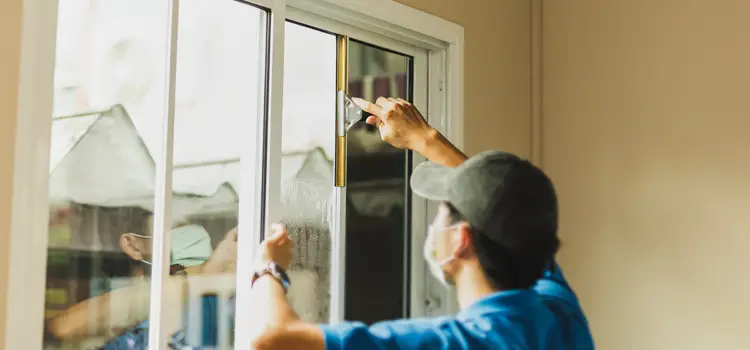
Place a draft snake next to your windows
Another low cost insulation solution is to place a long, thick piece of insulation — commonly called a draft snake — against the window sill and/or on top of the bottom shash to block air drafts.
Draft snakes are easy to find online and in home goods stores usually for just a few dollars. If you’re placing several, you can also choose to create your own draft snakes.
Use cloth that’s at least seven inches wide and a few inches longer than your window. Fold the cloth in half lengthwise and stitch it closed on two sides. Fill the snake with insulating material, fold over the open end and sew it closed.
Draft snakes can be a bit bulky to place on certain windows and won’t be able to stop any drafts from the top or sides of the window frame.
More long-lasting and effective solutions
These solutions will require greater investments of time and money, but they’ll provide better relief against the heat, which can lead to bigger savings over time, and may even increase the value of your home.
Install energy-efficient windows
One of the best long term ways to insulate your house for the summer and winter is to invest in energy efficient windows. Look for the ENERGY STAR label when buying new windows and review from the National Fenestration Rating Council (NFRC) to find the most efficient option.
Energy efficient windows use a combination of multiple pane glass, a fill of dense gas, and low-emissivity coating to insulate against the outdoor temperature and reflect heat.
ENERGY STAR windows earn their qualification through their U-factor — which is the rate at which it transmits non-solar heat flow — and the solar heat gain coefficient (SHGC) ratings, which measures how much solar radiation is admitted and subsequently released as heat inside a home.
Lower U-factor and SHGC ratings means greater energy efficiency, less heat gain, and better insulation for your home.
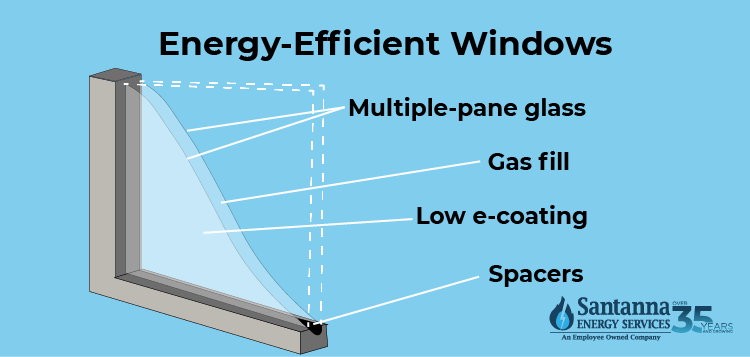
Install cellular or honeycomb shades
Insulated cellular shades are a specialized window shade made of pleated materials that fold like accordions and contain one or more air layers in a honeycomb cross-section.
The air layers act as insulators, reducing the amount of heat conducted through the window. Some cellular shades have cells with low emissivity surfaces to reflect ultraviolet or infrared light.
In the summer, cellular shades can reduce heat loss through windows by 40% or more. They’re a less expensive option than installing new windows and, unlike window films, they won’t cover the window year-round.
Add weather stripping to your windows
Though similar in idea to a draft snake, weather stripping is far more effective at blocking drafts, as it can be tightly applied to all parts of a window. It’s less bulky and obvious than a draft snake and can be left on year round.
For a proper air seal, apply the weather stripping directly between the frame and the window sash. The weather stripping should not interfere with opening or closing the window and should seal well when the window is closed.
Different types of weather stripping materials — such as felt, foam, or vinyl — will have their own advantages and disadvantages, as well as different costs. Compare your options to determine which is the best fit for your windows.
Add window awnings to your home’s exterior
An awning is a roof-like shelter installed on the outside of a home to shade windows from the sun’s direct rays. By blocking direct light, window awnings can reduce solar heat gain in the summer by up to 65% – 77%.
You can use an awning to shade on one window or have an awning custom-made to shade the entire side of your house — preferably the sun-facing south side.
When choosing an awning, remember that light-colors will reflect more sunlight. Also, awnings require ventilation to allow hot air to rise away from the window. Finally, they will require occasional cleaning to remove stains.
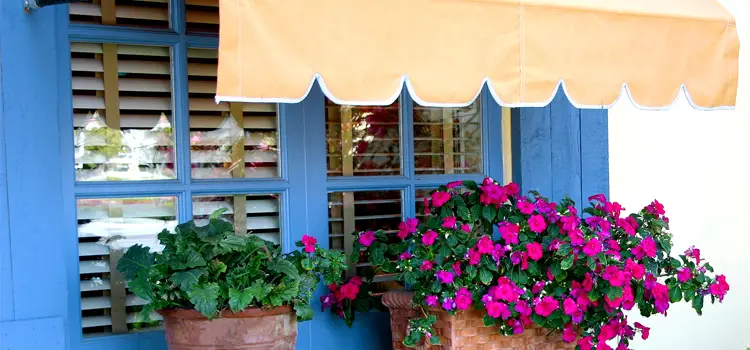
Add shade landscaping to your property
Adding trees and bushes around your home not only enhances the beauty of your yard, it can create natural shade to reduce the amount of sunlight heat from sunlight that enters through your windows.
Plant deciduous bushes or trees with high, spreading crowns to better insulate against solar heat in the summer but still allow for sun exposure in the winter. Or, you could plant evergreen trees and shrubs for year-round shade and an effective wind block.
Protect your house from future growth by planting trees far enough away from the home so the root systems aren’t a risk to the foundation. Providing some space also prevents the buildup of wetness or constant humidity.
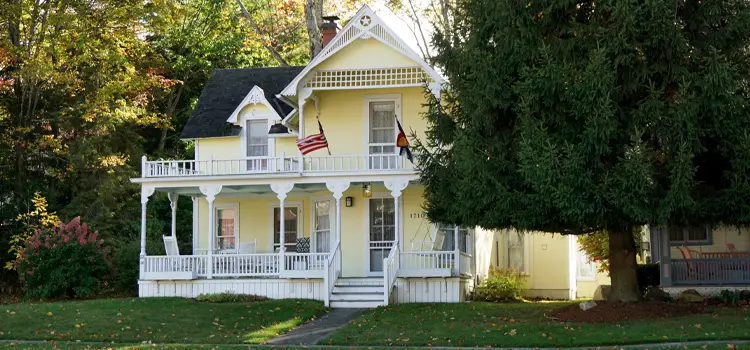
You don’t have to choose just one of these approaches — using a combination of insulation techniques can better ensure that you’re keeping the maximum amount of summer heat out of your home. For example, you could upgrade to energy-efficient windows and add an awning, but going a bit further and keeping a set of cellular shades drawn during the day will really insulate your rooms from the sun’s rays.
FAQs
What can you put on windows to keep heat out?
There are several materials you can place on your windows to improve insulation. Bubble wrap is an inexpensive insulating material that can be removed between seasons, while window films are longer-lasting and come in several different designs.
How do you block sun heat from windows?
Inside the house you’ll want to use curtains, drapes, or shades to block direct sunlight. Blackout or cellular shades will provide the most insulation, though blackouts are better at blocking all light while cellular shades are better insulators. Outside of the house you could install an awning or plant shade landscaping.
Do window insulation work in the summer and winter?
Yes, any insulation approach that blocks the transfer of heat will work in summer or winter. Though, in winter it’s to block the loss of heat from the house, while in the summer it’s to prevent more heat from entering the house. Energy efficient windows, weather stripping, cellular shades, curtains, and draft snakes will provide heating and cooling benefits in both seasons.
What is the best insulation for windows in hot weather?
The best insulation is the one that works the best for your circumstances. However, generally you should invest in long-term insulation solutions. Not only will investments such as energy-efficient windows or natural landscaping provide the most benefits over time, they can actually increase the value of your home.
How can I save on electricity costs to stay cool this summer?
Besides insulating your windows, there are other steps you can take to ensure your house is cooled more efficiently. Here are some helpful tips to save on summer cooling costs.
- Increase the setting on your thermostat. Don’t overwork your AC units with 60 degree settings. 78 degrees is considered ideal for balancing energy savings with comfort. For further savings, you should also increase your thermostat to around 85 degrees when you leave the house in summer.
- Open your windows at night. Just as you want to close your shades during the day, at night you should open the shades to help let out ambient heat. During cooler nights, you should also consider opening windows to let out even more warm air.
- Replace incandescent bulbs with CFL or LED bulbs. If you’re still using old fashioned incandescent bulbs, replace them. Incandescents actually generate more heat than light! Installing CFL or LED bulbs will help reduce your energy usage and ambient temperature.
- Take other steps to keep your house cooler. There’s a host of small things you can do around the house to make it more energy efficient in the summer and winter. Whether it’s adding shades to your windows or planting greenery around the house, every small action can add up to larger savings.
- Select an energy plan that fits with your lifestyle. If you want more control over your energy bill and don’t want to worry about summer spikes in your kWh charges, see if your retail energy provider offers Unlimited Energy or Fixed-rate plans.
Fixed-rate plans guarantee a cost that does not change for a specified period of time, while unlimited energy plans allow you to pay the same amount every month without worrying about fluctuating energy costs.*
You can even choose Earth-Friendly Energy plans if you want to power appliances with renewable electricity plans or heat your home with carbon-neutral gas plans.
Want to see which of Santanna’s energy plans is right for you? View plans in your neighborhood.
* Restrictions apply. Enrollment based upon program eligibility. Customers using more than 125% of normal monthly usage as determined by Santanna may be required to switch plans.
Tyler is an experienced energy professional, having worked for Santanna Energy Services, for the past four years. He is passionate about renewable energy and believes that diversifying the energy grid is the key to a sustainable future. Tyler is dedicated to supplying consumers with the best possible energy solutions and works diligently to make sure that Santanna can deliver the highest quality service.


